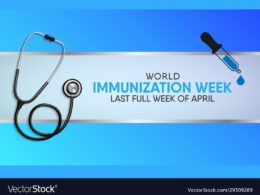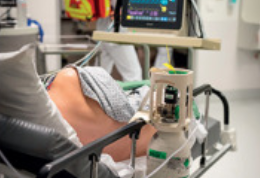Healthcare IT News
By Tammy Lovell
June 14, 2022
pharmaboardroom
Key messages
by Joaquim Cardoso MSc.
Continuous Transformation — Health Institute
For the vision of “better health and better care at lower cost, for all”
June 16, 2022
What is the problem?
- Despite the 350,000 digital health technologies on the market, no standardised regulation or risk management system is in place in the Nordic countries leaving medical professionals unable to find and prescribe digital technologies safely.
What is the solution?
- The NordDEC programme aims to resolve this issue and lead the world in adopting connected health technologies on a large scale by establishing a common benchmark of criteria across the region.
- It draws from international best practice and allows each country to add on localised accreditation criteria, over and above the region-wide baseline criteria.
- The accreditation framework was developed by the Organisation for the Review of Care and Health Apps (ORCHA) and the project was funded jointly by and the Nordic healthtech industry.
- Digital health products are tested against more than 500 measures across data and technical security, clinical assurance, and usability.
- New criteria such as evidence of penetration (PEN) and vulnerability testing will also be required to provide further safety and effectiveness assurance.
What is the initiative?
- A world-first programme to unify digital health standards across multiple countries, is being launched by the Nordic Interoperability Project (NIP) at HIMSS22 European Health Conference & Exhibition today.
- The Nordic Digital Health and Evaluation Criteria (NordDEC) programme aims to enable healthcare providers across Sweden, Denmark, Norway, Finland and Iceland to evaluate and identify trusted digital health technologies within healthcare and preventive care.
- It will also provide guidance to product developers and technology owners, so they have clear parameters when planning new products and market access strategies.
What is the vision?
- The Nordic region plans to be the most integrated health region in the world by 2030, according to the Nordic Council of Ministers.
- A shift towards digital health, and its focus on the self-management of health by Nordic populations, will be an important step on this journey, but it also brings new risks.
ORIGINAL PUBLICATION (full version)

Cross-border system launched to unify digital health standards in the Nordics
Healthcare IT News
By Tammy Lovell
June 14, 2022
A world-first programme to unify digital health standards across multiple countries, is being launched by the Nordic Interoperability Project (NIP) at HIMSS22 European Health Conference & Exhibition today.
The Nordic Digital Health and Evaluation Criteria (NordDEC) programme aims to enable healthcare providers across Sweden, Denmark, Norway, Finland and Iceland to evaluate and identify trusted digital health technologies within healthcare and preventive care.
It will also provide guidance to product developers and technology owners, so they have clear parameters when planning new products and market access strategies.
The accreditation framework was developed by the Organisation for the Review of Care and Health Apps (ORCHA) and the project was funded jointly by and the Nordic healthtech industry.
WHY IT MATTERS
The Nordic region plans to be the most integrated health region in the world by 2030, according to the Nordic Council of Ministers.
A shift towards digital health, and its focus on the self-management of health by Nordic populations, will be an important step on this journey, but it also brings new risks.
Despite the 350,000 digital health technologies on the market, no standardised regulation or risk management system is in place in the Nordic countries leaving medical professionals unable to find and prescribe digital technologies safely.
The NordDEC programme aims to resolve this issue and lead the world in adopting connected health technologies on a large scale by establishing a common benchmark of criteria across the region.
It draws from international best practice and allows each country to add on localised accreditation criteria, over and above the region-wide baseline criteria.
Digital health products are tested against more than 500 measures across data and technical security, clinical assurance, and usability.
New criteria such as evidence of penetration (PEN) and vulnerability testing will also be required to provide further safety and effectiveness assurance.
The Nordic region plans to be the most integrated health region in the world by 2030…
A shift towards digital health, and its focus on the self-management of health by Nordic populations, will be an important step on this journey, but it also brings new risks.
THE LARGER CONTEXT
Meanwhile, a proposal for the European Health Data Space (EHDS) was announced by the European Commission last month.
The framework will potentially harness the health data of nearly 450 million people, facilitating cross-border care among EU member states and opening opportunities for research.
The framework will potentially harness the health data of nearly 450 million people, facilitating cross-border care among EU member states and opening opportunities for research.
ON THE RECORD
NIP CEO, Anders Tunold-Hanssen, said: “The Nordics is home to a vibrant and growing healthtech industry.
This programme provides suppliers with an attractive platform to reach the whole of the Nordics healthcare system, breaking down current barriers to market access.
The next stage will be the creation of a digital library for the Nordics, containing thousands of top-quality apps which healthcare professionals can use safely and confidently.”
Founding CEO, ORCHA, Liz Ashall-Payne, said: “This has been a landmark project for ORCHA and all the countries involved and the learning can be rolled-out across other geographical regions.
It also gives suppliers a good springboard to easily meet the requirements to enter other geographies, such as the UK, Netherlands, Canada and the US.”
Originally published at https://www.healthcareitnews.com on June 15, 2022.
Names mentioned
Founding CEO, ORCHA, Liz Ashall-Payne
NIP CEO, Anders Tunold-Hanssen,













